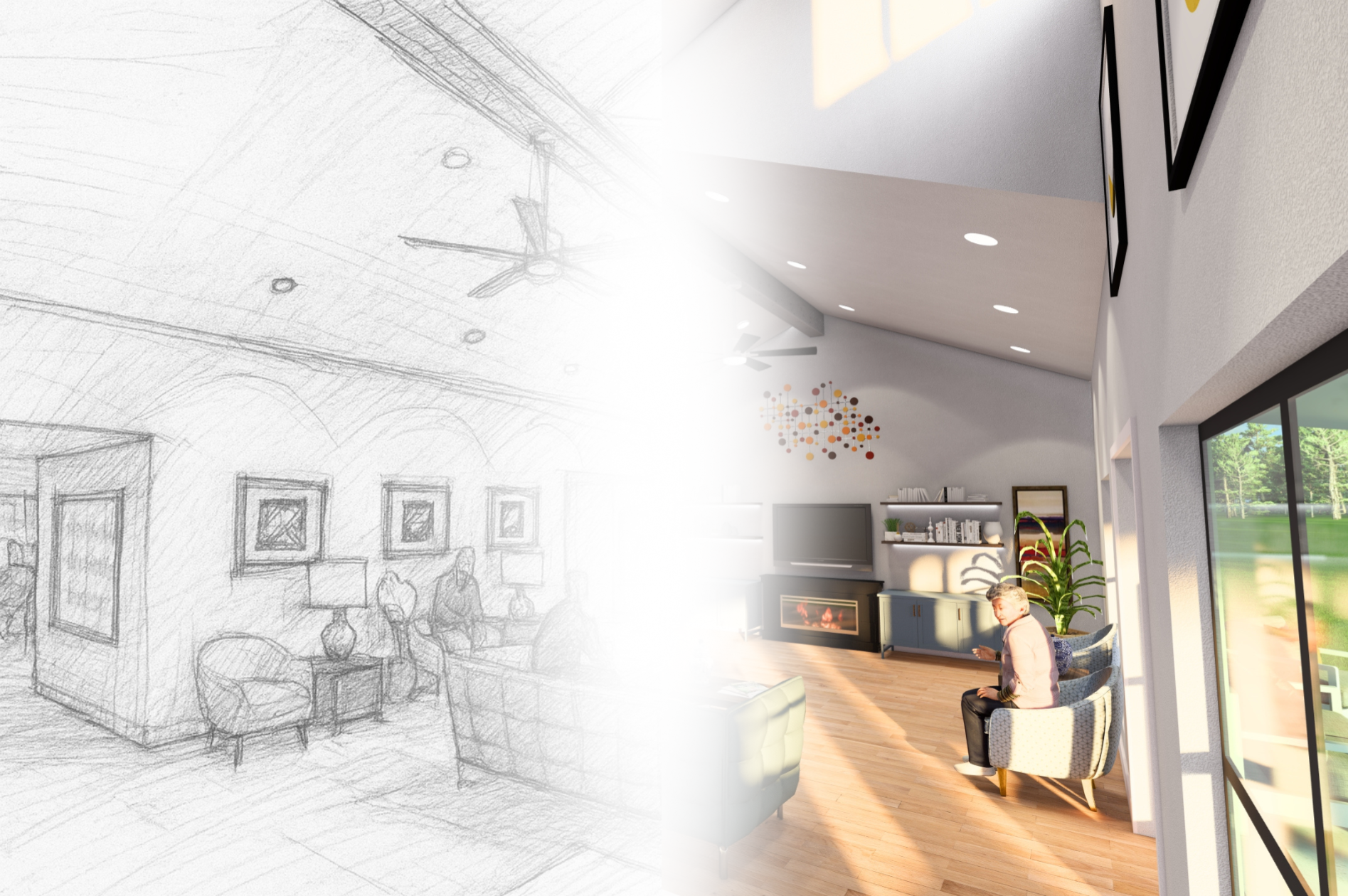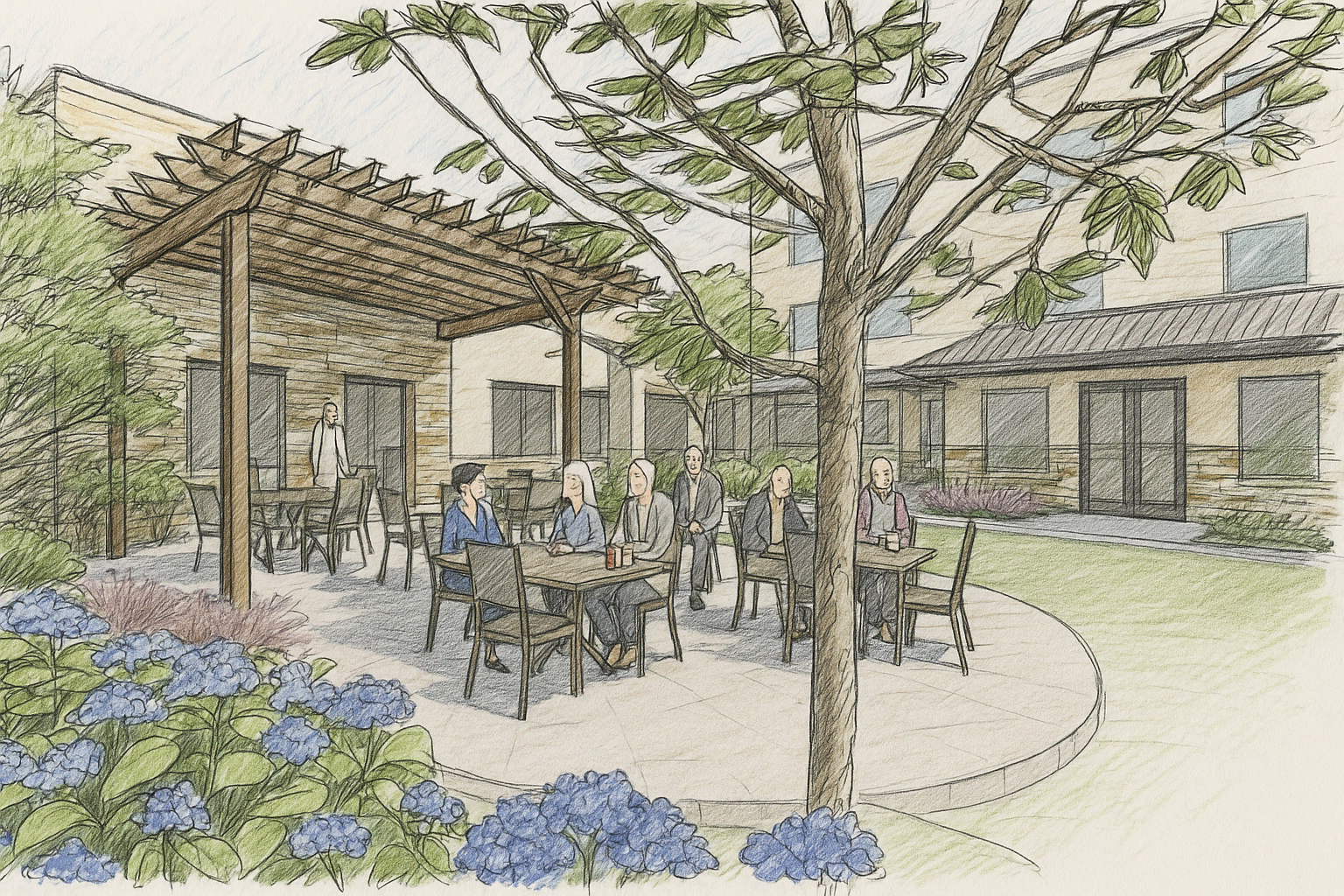Renovation or Repurpose? Navigating the Future of Aging Senior Living Spaces and Nursing Homes
Across the country, senior living communities and nursing homes are facing a crossroads.
Aging buildings, once thoughtfully designed for earlier generations, now struggle to meet modern needs and expectations for comfort, accessibility, and wellness.
As owners and operators look to the future, the question arises: should you renovate your existing space, or repurpose it for an entirely new function for your senior living community?
At Rheinlander Architects, we believe that answering this question starts not with square footage, but with people—the residents, the caregivers, and the communities that support them.
In this article, we’ll explore the critical factors that shape this decision, from code compliance and licensing requirements to the financial, environmental, and wellness impacts of each approach.
You’ll also discover when renovation is the smarter choice, when repurposing makes more sense, and the hidden complexities that can derail projects if not anticipated early.
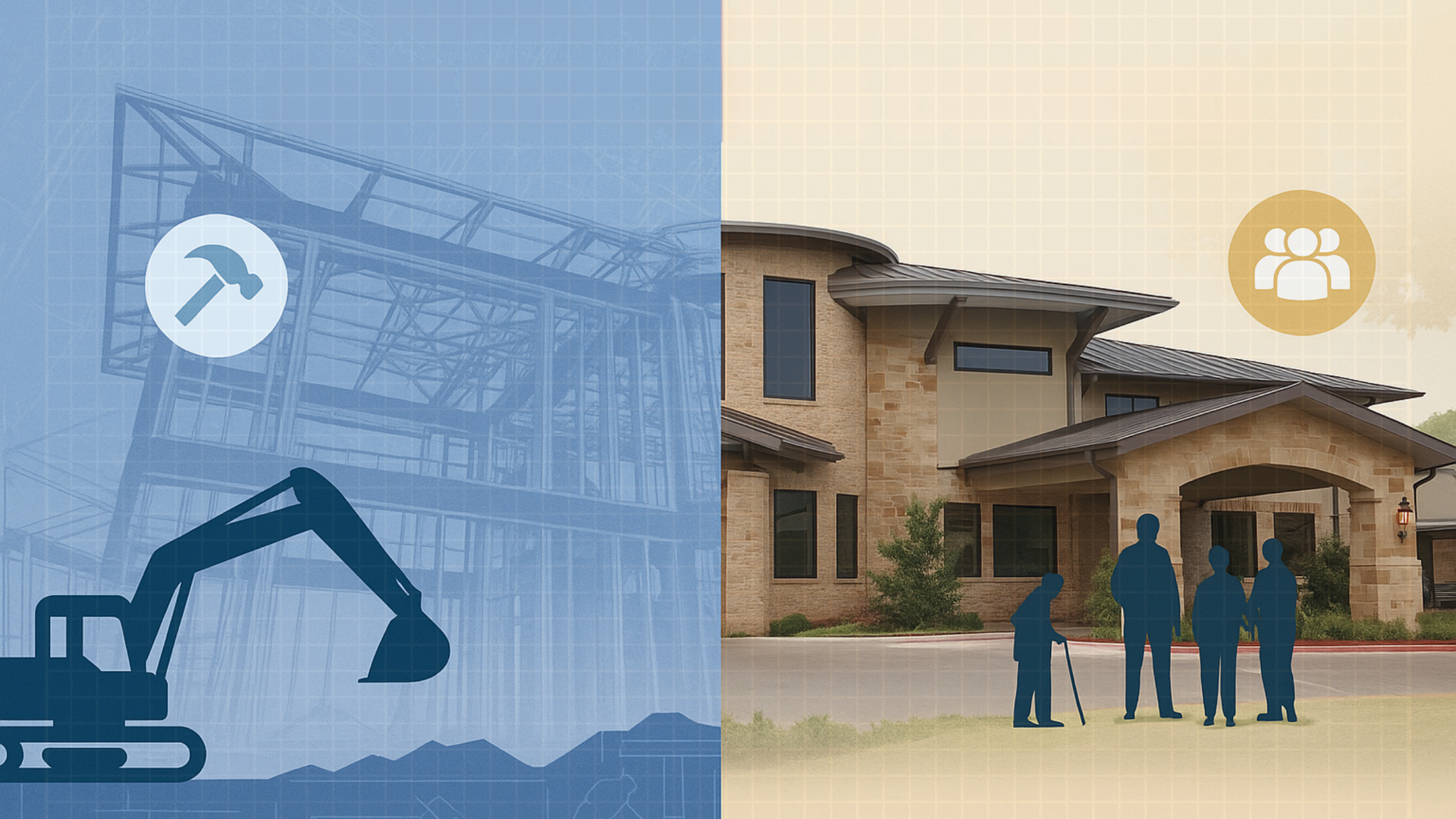
Renovation vs. Repurposing: What’s the Difference?
Many senior living operators ask: what's the real difference between renovation and repurposing?
Understanding these terms can clarify the best direction for your community based on goals, budget, and resident needs.
What Renovating Entails
Renovating means upgrading what already exists.
This might include reconfiguring layouts for better flow, modernizing finishes, or improving infrastructure like HVAC systems.
Renovation is often more cost-effective than new construction and can be more flexible with building codes—especially if the community is still in operation.
For many nursing facilities, renovations are an opportunity to introduce design models that better support resident autonomy, such as the household model, which creates smaller, more homelike groupings rather than long institutional corridors.
What Repurposing Involves
Repurposing goes a step further. It’s not just about improving a space—it’s about transforming its use.
Converting a skilled nursing environment into assisted living apartments, or redesigning underutilized wings into adult day centers, are examples of repurposing.
These changes often trigger full compliance with current building codes and accessibility standards.
“Repurposing makes sense when you can move to a use with fewer regulatory hurdles—like converting a skilled nursing building into independent living. That shift reduces both cost and complexity.”
- Paul Rheinlander, Founder of Rheinlander Architects
In some cases, especially when HUD-financed properties are involved, repurposing must also navigate regulatory and funding implications that affect feasibility.

3 Key Considerations for Updating Senior Living and Care Environments
Before moving forward with updating, it’s worth asking: what challenges might stand in the way?
From regulatory hurdles to outdated layouts, here are three factors that can determine whether your vision becomes a reality—or a costly frustration.
1. Code Compliance and Accessibility Requirements
Repurposing often requires compliance with current accessibility standards, which can be particularly challenging in older buildings with compact or outdated layouts.
Renovation projects, while generally governed by more flexible guidelines, are still subject to the edition of the International Existing Building Code (IEBC) adopted by the Authority Having Jurisdiction (AHJ).
This version of the code often provides more leniency than the International Building Code (IBC), allowing for creative yet compliant updates that preserve the structure’s character while improving functionality.
“Even a small project can trigger big code changes. Bathrooms, for example, are much larger today than they were 20 years ago, and that space has to come from somewhere.”
- Michael Rheinlander, Principal of Rheinlander Architects
For property owners, this means that what starts as a simple update can quickly expand in scope. Meeting accessibility standards often reduces usable square footage, impacts room counts, and drives up costs.
Understanding these trade-offs early helps owners make informed decisions that meet compliance requirements without compromising resident comfort and financial sustainability.
2. Licensing and Operational Status
If a building is no longer licensed or operational, reopening it often means meeting the same standards as new construction. This can trigger requirements for life safety systems, accessibility upgrades, and even new fire-rated assemblies.
For owners, that can turn what looks like a cost-saving reuse into a project with nearly the same financial and regulatory burden as building new.
3. Space Constraints and Structural Limits
Many older senior care environments simply weren’t built for today’s needs. Small bathrooms, narrow hallways, and outdated mechanical systems make certain updates impractical without major changes.
For property owners, this often means that even modest improvements can snowball into large-scale renovations, requiring reconfiguration of core infrastructure.
In some cases, the cost and disruption of addressing these limitations may outweigh the benefits of renovation, making repurposing or new construction the more viable path.

When Renovation Is the Right Move
Renovating isn’t always the easiest path, but in many cases, it can be the most practical and impactful.
For communities with solid infrastructure and an established resident base, renovation allows owners and operators to make meaningful improvements without starting over. It’s a way to breathe new life into aging spaces, while preserving the history and familiarity that residents and staff already value.
Preserving Community and Familiarity
For older adults, change can be disruptive. Renovation allows a community to evolve without losing its identity.
Residents are able to maintain their daily routines, stay close to caregivers they know and trust, and continue living in a space that feels like home.
Staff, too, benefit from the continuity; fewer relocations mean stronger relationships and a smoother operational transition. This continuity fosters stability, which is especially important for memory care and long-term residents.
Engaging with residents and staff during planning can reveal which aspects of the environment matter most to preserve. Our approach to stakeholder engagement highlights why this process is so valuable.
Financial and Environmental Benefits
Compared to building new, renovation is often the more cost-effective choice. It leverages existing structures, utilities, and infrastructure, saving both time and money.
In addition, renovation generally produces less construction waste and has a smaller environmental footprint, aligning with sustainability goals many communities and investors prioritize today.
“Renovation is happening everywhere right now. Owners are putting facelifts on nursing facilities to stay competitive and to appeal to residents and families who have higher expectations.”
- Michael Rheinlander, Principal of Rheinlander Architects
Boosting Wellness and Efficiency
Well-designed renovations refresh finishes and they can transform the way a building supports resident wellness and operational flow.
Adding more rooms can improve dignity and privacy, while upgrades like improved natural lighting and better ventilation enhance health outcomes.
Even small changes, such as reconfiguring storage into on-floor laundry rooms, can help reduce staff travel time and increase efficiency. These thoughtful upgrades not only improve quality of life for residents, but also help older assisted living and skilled nursing buildings remain competitive in today’s market.
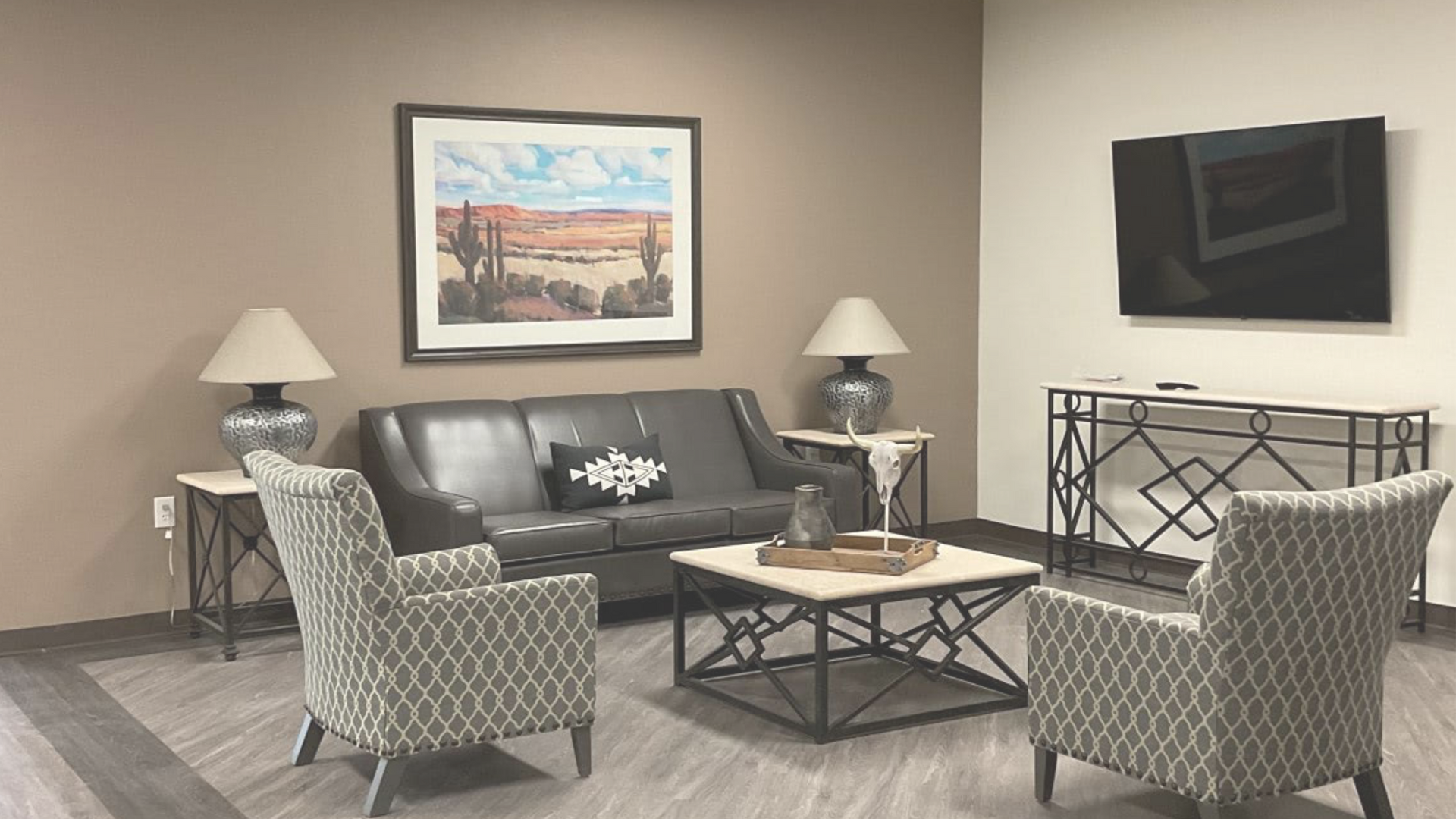
When Repurposing Adds Greater Value
While renovation can be the right path for some communities, there are times when a simple update isn’t enough.
In cases where resident needs, market demand, or regulatory environments have shifted significantly, repurposing may be the smarter investment.
Repurposing allows communities to rethink how space is used, unlock new revenue streams, and ensure long-term viability in a competitive market.
Adapting to New Market Needs
Families today are seeking more personalized options, ranging from assisted living residences that support autonomy to short-stay rehabilitation settings focused on post-surgical recovery. Repurposing allows providers to meet these evolving needs without the high costs and timelines associated with ground-up construction.
This approach is especially beneficial for operators utilizing HUD financing or Medicaid funding. These programs often come with budgetary constraints and regulatory requirements, making cost-effective upgrades essential.
Repurposing can help these organizations modernize existing residences to align with today’s care models, supporting individualized services while maximizing capital efficiency.
By converting traditional long-term nursing settings into environments tailored for rehabilitation or more independent living, operators can extend the value of their assets and better support dignity, privacy, and choice for residents.
Making the Most of Existing Assets
Location is one of a community’s greatest strengths, and in many cases, the building itself no longer serves its best purpose.
Repurposing allows owners to retain the value of a prime site while repositioning the property for new uses. For example, a former skilled nursing wing might be transformed into a cluster of rooms for higher-acuity residents, or reimagined as a wellness-focused household model designed around smaller, homelike groupings.
For multi-level campuses, repurposing also provides the flexibility to diversify services under one roof, integrating independent living, adult day centers, or memory care units alongside existing care environments.
This not only maximizes operational efficiency but also creates a more vibrant, resident-centered community.
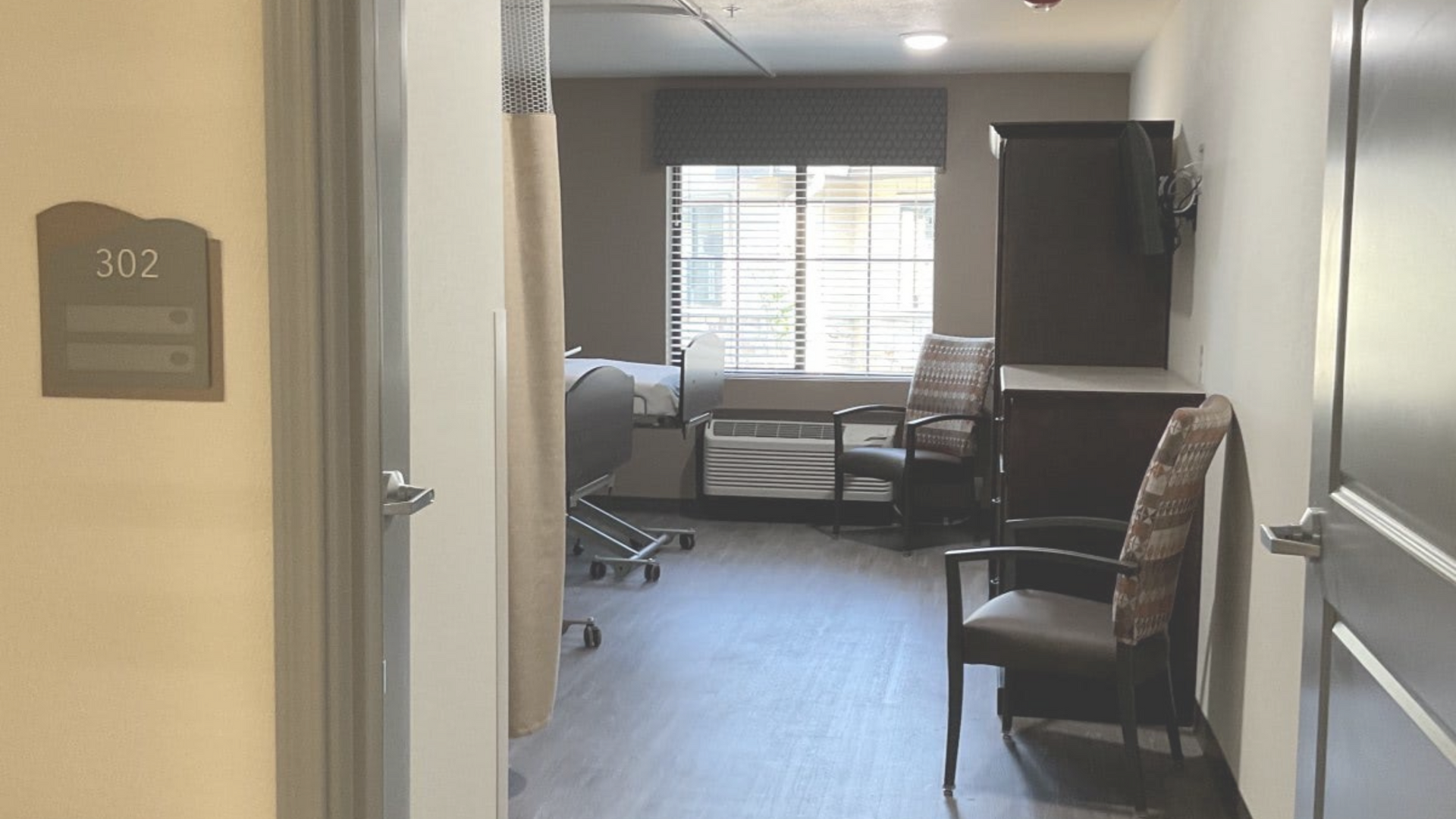
Complexities That Can Derail Renovation or Repurposing Plans
Both renovation and repurposing can unlock incredible opportunities for senior living and care environments, but they also come with challenges that can derail even the best-laid plans.
Without careful planning and a trusted
design partner, projects can quickly face escalating costs, delays, or regulatory setbacks. Understanding these risks upfront is essential to avoiding costly surprises down the road.
Hidden Costs of Code Compliance
Building codes evolve over time, and what was once considered compliant may no longer meet today’s standards.
Even seemingly small updates can trigger requirements for modern accessibility, such as larger bathrooms, wider doorways, and improved turning radii for mobility devices.
These adjustments often demand taking space from other areas or reconfiguring layouts entirely.
In some cases, accessibility upgrades also require costly changes to mechanical, electrical, or plumbing systems—expenses that operators may not anticipate in early budgets. Careful upfront analysis helps ensure these hidden costs don’t derail a project midstream.
Structural and Operational Surprises
Every older building carries a degree of unpredictability.
“The challenge with older facilities is that you don’t always know what’s behind the walls. Making assumptions can put an owner—and the design team—in a liability situation.”
- Paul Rheinlander, Founder of Rheinlander Architects
Behind the walls, there may be outdated wiring, undersized plumbing, or insulation that no longer meets energy standards. Some structures may have been built with materials or methods that were once acceptable but are no longer considered safe or code-compliant.
For operators, these unknowns can create delays, added costs, and liability risks if not identified early. Thorough building assessments, feasibility studies, and selective demolition can reveal these issues before construction begins—minimizing unpleasant surprises once work is underway.
When Building New Becomes the Best Option
While renovation and repurposing can extend the life of existing assets, there are times when starting fresh is the most practical, and even cost-effective, choice.
Buildings constructed decades ago may have structural limitations, sit in floodplains, or contain outdated materials that make compliance nearly impossible.
“Every project is unique. Some older buildings simply weren’t built to modern standards, and trying to retrofit them doesn’t make sense. In those cases, the best investment is a new facility designed from the ground up.”
- Michael Rheinlander, Principal of Rheinlander Architects
New construction offers the greatest flexibility to design around current resident expectations, such as private space, modern amenities, and the household model, while ensuring full compliance with today’s codes.
Though often more expensive upfront, building new can provide long-term savings by reducing maintenance issues, improving operational efficiency, and creating an environment that attracts both residents and staff.
For owners, the key is knowing when to stop pouring resources into an outdated structure and instead invest in a future-ready community.
Whether renovating, repurposing, or starting fresh, our team has the expertise to guide every step of the process.
See more about how
our services support senior living design at every stage.
Beyond Blueprints: Choosing What’s Right for Your Community
The decision to renovate or repurpose isn’t just a logistical one—it’s strategic, emotional, and deeply personal. It’s about more than walls and square footage; it’s about creating spaces that feel safe, functional, and welcoming for everyone who enters.
In this article, we’ve walked through the differences between renovation and repurposing, explored the regulatory and financial considerations that influence each path, and highlighted the opportunities they bring for improving resident wellness, staff efficiency, and long-term operational success.
We’ve also shed light on the potential pitfalls—like hidden code costs and structural surprises—that can derail projects without the right planning.
And we've detailed some of the benefits and reasons to build new.
Whether you’re navigating complex licensing requirements, weighing funding sources like HUD, or simply trying to breathe new life into a space, Rheinlander Architects is here to help.
Our role is not just to design buildings, but to guide clients toward solutions that balance compliance, cost, and compassion.
Contact Rheinlander Architects today to explore what’s possible for your senior living community or care environment—and take the next step in shaping a future that honors both residents and the people who care for them.
